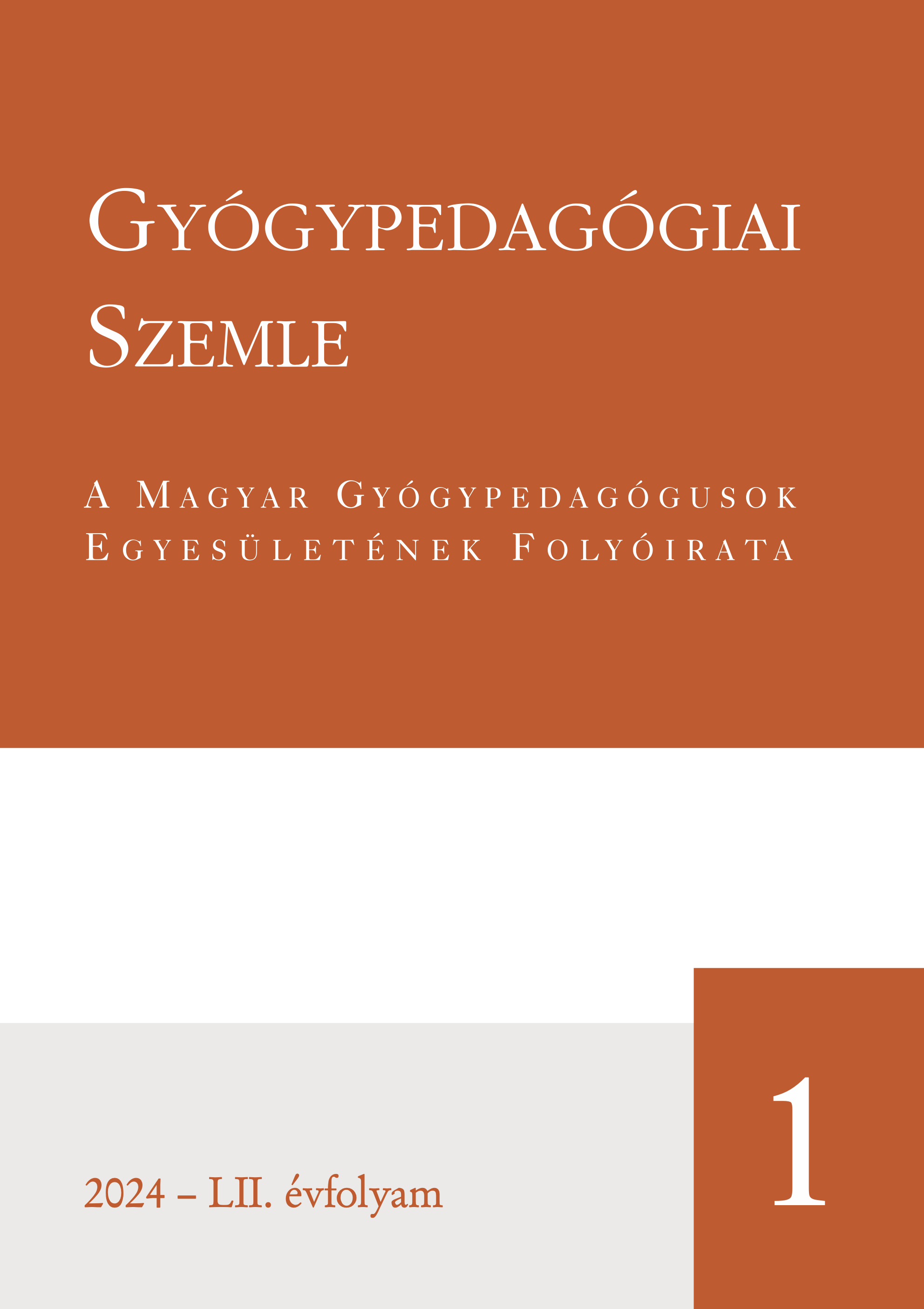School life paths of women with visual impairment
DOI:
https://doi.org/10.52092/gyosze.2024.1.2Keywords:
women with visual impairment, school carrier, integrated education, visual impairmentAbstract
Background and objectives: It is important to explore a period that gives us an idea of the education of visually impaired students over the past decades. We also need to address how the double oppression of women is manifested in the educational setting from an early age. School paths of five women aged 32-45 with visual impairment are analyzed. From their narrative interviews, we highlight those parts of their life stories that are related to their public education. Our aim is to describe the special and integrated education of visually impaired pupils in the 1980s and 1990s and the processes that influenced it. This changed in 1993 when the Education Act made integrated education possible for pupils with visual impairments. This set in motion a process with long-lasting effects.
Method: In this research, narrative and Grounded Theory methods were mixed. Data analysis was carried out with the MAXQDA 2022 software. Combining the two methods is rare, but we see examples of it (Charmaz, 1999). MAXQDA 2022 software was used for the analysis. We sought to answer two questions: 1. What difficulties can be identified in the life histories of visually impaired women during their schooling? 2. What resources were available to them to cope with the difficulties they encountered during their school life?
Results: The results show that family can be a source of strength, whether or not it is a factor. At the same time, teachers' rejection, lack of special educational support, integration difficulties, and exclusion were seen as difficulties in education.
Conclusions: The identified resources and difficulties are inseparable.
Keywords: women with visual impairment, school carrier, integrated education, visual impairment

